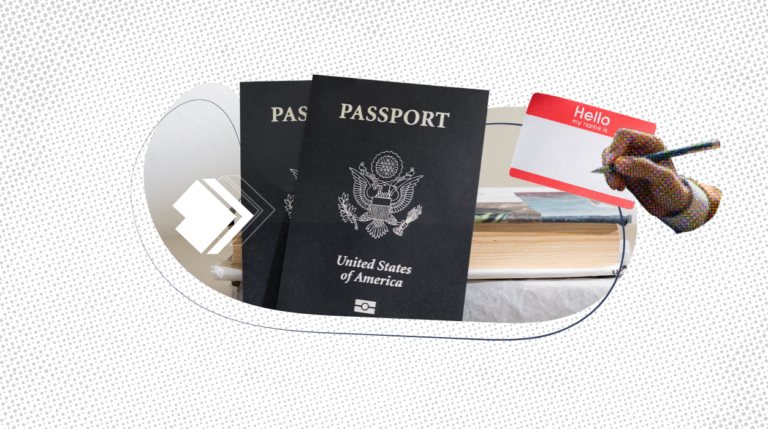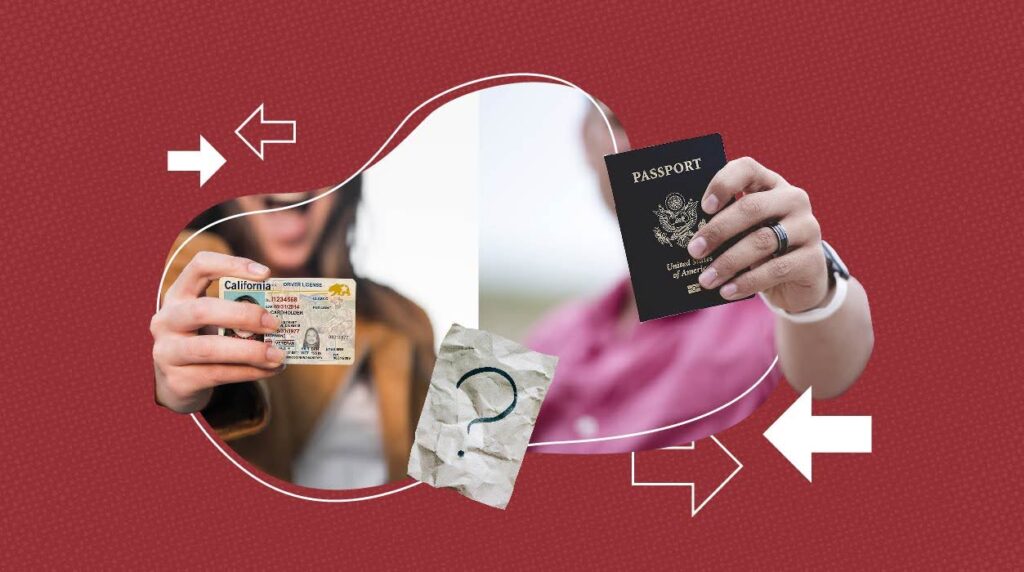Understandably, confusion persists about REAL IDs and passports. If you’re like many, you have questions about this newer form of identification compared to the ones you’re used to having, including a passport or driver’s license.
What are REAL IDs? Will REAL IDs replace passports? Do you need a REAL ID to travel? We have the answers.
Understanding REAL ID and Its Purpose
You may have only recently heard about this new way to identify yourself, with its implementation going into effect on May 7, 2025. This type of identification has been part of our lives for nearly two decades. Picture it: a small, sturdy card with a star glinting in the corner, quietly doing more than just sitting in your wallet.
Back in 2005, Congress passed the REAL ID Act, setting out to redefine how we verify identity in America. Why? The events of September 11th left a lasting mark, and this measure was part of the response—a way to tighten security and build a consistent system across all states. It wasn’t just about bureaucracy. It was about trust.
REAL IDs are more than a piece of plastic. They’re a shield, helping to combat identity theft and fraud. Unlike a fragile Social Security card, these are designed to protect. The star in the upper-right corner is a symbol of reliability. A quiet guardian. Simple but effective.
Qualifying for a REAL ID will mean presenting proof of your identity and residency, allowing each card issued to meet recent changes to federal security standards.
Can REAL IDs Replace Passports for U.S. Travelers?
No. According to the U.S. Department of Homeland Security, while REAL IDs will be a requirement to board commercial aircraft, enter federal facilities, and access nuclear power plants, a U.S. resident can use acceptable alternative documents. Alternate ID forms can include a passport or military ID.
A REAL ID isn’t a magic key for international travel. You’ll need a passport for that. A “star card” is sufficient for successfully boarding domestic flights but not for international air, sea, or land travel. You can’t use a REAL ID to replace a passport to travel internationally. Having a REAL ID also won’t help if you’re applying for a visa.
Key Differences Between REAL ID and Passport

- Usage: A REAL ID aims to let card carriers access domestic flights and federal buildings. A passport is for those wanting or needing to travel internationally.
- How Long They’re Valid: A passport is valid for ten years. That’s if you received it at 16 or older. REAL IDs are valid for four or eight years. It depends on what option you choose.
- Cost: The cost of a REAL ID varies by state and is typically $25 to $50. A passport costs about $130 to create or renew.
- Time to Obtain: Since states process and issue REAL IDs, these forms of ID are typically quicker to obtain than passports. Getting a passport requires going through the U.S. State Department and can take months or longer.
While a REAL ID is ideal for traveling domestically and complying with federal standards, passports enable you to travel internationally. A REAL ID won’t replace a passport.
What About Enhanced Driver’s Licenses (EDLs) vs. Passports?
Besides wondering if a REAL ID will replace a passport, you may also consider how the former differs from an enhanced license. They’re not the same. An EDL (enhanced driver’s license), issued in states such as New York, Vermont, and Michigan, lets people travel back and forth from the U.S. to Canada, Mexico, and other nearby international destinations.
The main difference between enhanced driver’s licenses vs. passports involves air travel. You cannot use an EDL to board an international flight. You must present a valid passport. It also acts as proof of citizenship during land and sea-based border crossings.
Example: You live in Michigan and want to drive to Canada. In this case, your EDL would suffice as proof. You’d need a passport if you wanted to fly to Europe.
Do I Need a REAL ID to Travel?
It depends. For instance, you wouldn’t need to replace your driver’s license with a REAL ID to go on a road trip throughout the United States. However, you’d need it for a domestic flight. Presenting another valid form of ID (such as a passport) can also enable you to fly domestically. You would need a valid passport to board any international commercial flight.
Not following REAL ID travel requirements by May 7, 2025, could mean facing significant delays and potentially being barred from accessing nuclear plants, federal buildings, and commercial flights.
Streamlining Travel
Will a REAL ID replace a passport? No. However, both forms of identification can be crucial to have. A REAL ID streamlines domestic travel while meeting federal identification requirements. Passports provide unparalleled access to travel internationally. Understanding REAL IDs vs. passports can help ensure you always carry the correct type of identification. Find out how to apply for a Real ID.

